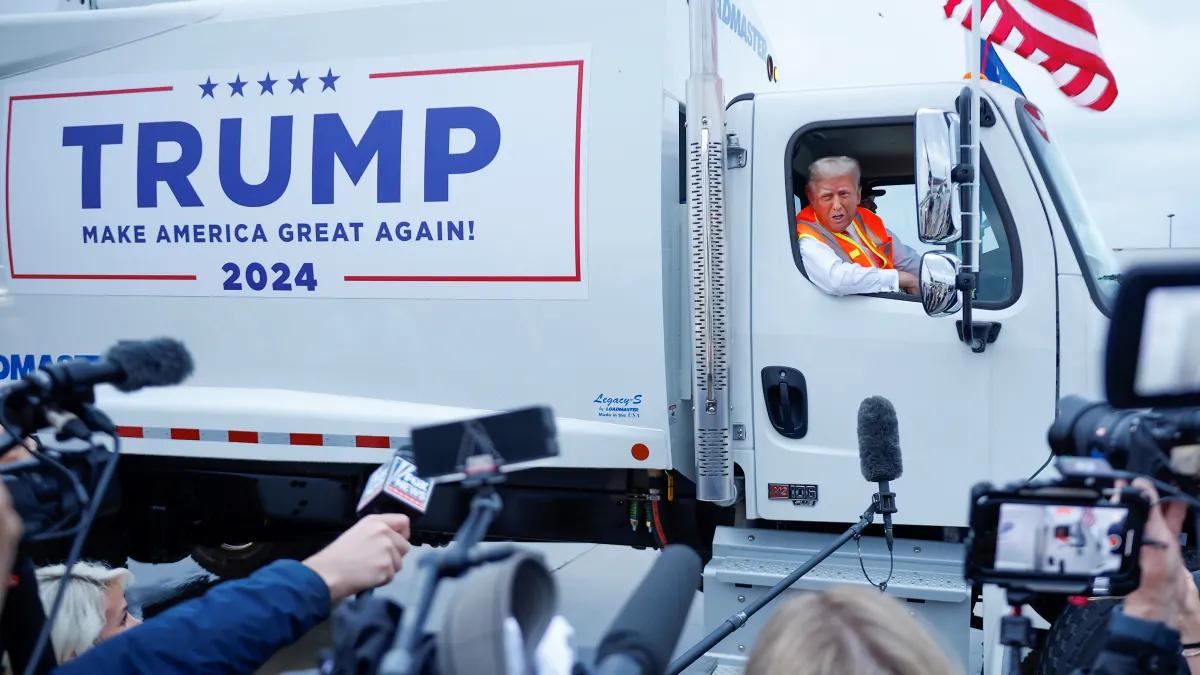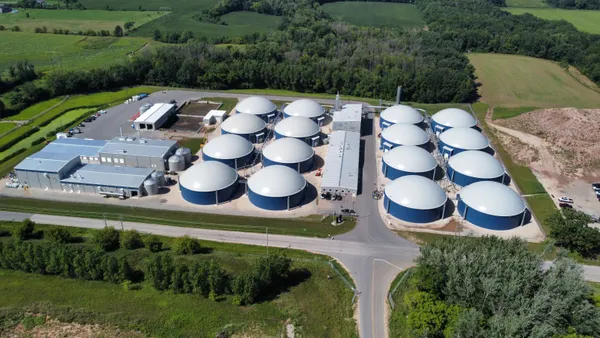Dive Brief:
- Between 73 and 152 million metric tons of food gets wasted each year in the U.S., or over over a third of the country's food supply, according to a recent report from the U.S. EPA. The most commonly wasted foods are fruits and vegetables, followed by dairy and eggs. Over half of all waste occurs at households and restaurants. The food processing sector generates 34 million metric tons of waste per year, the agency said.
- EPA said that halving food waste in the U.S. — a goal set by policymakers — would save 3.2 trillion gallons of blue water, 640 million pounds of fertilizer, 262 billion kilowatt hours of energy, 92 million metric tons of carbon dioxide equivalent and over 75 million acres of agricultural land. Reducing waste of meats, cereals and fresh fruits and vegetables would have the biggest environmental impact, according to the agency.
- Over the past decade, total U.S. food loss and waste has increased by 12% to 14%, according to EPA. Based on these findings, in order for the U.S. to reach its goal of halving food waste by 2030, it will require greater effort from consumers, businesses and legislators.
Dive Insight:
Ever since the Obama administration created the goal to halve food waste in the U.S. by 2030, the country has struggled to make meaningful progress. To hit the target at this point would require a waste reduction of tens of millions of tons over the next eight years, but the EPA report maintains it is essential to try.
"As global populations and incomes rise, and the environment faces pressures from increased food production, reductions in the per person environmental footprint of agriculture will be essential to the sustainability of the planet," the report said.
The food industry has attempted to address the amount of food waste among consumers and within the supply chain in different ways. Unilever has announced its commitment to halve the food waste in its direct global operations by 2025. On the consumer end, its Hellmann’s mayonnaise brand launched a “Make Taste, Not Waste” campaign with comedian Amy Schumer earlier this year. The brand said it is also working to reduce wasted or lost food in its value chain. Hellmann's has already saved at least 1.2 million pounds of food and donated it to people in need, according to the brand.
Produce accounts for between 34% and 40% of U.S. food waste, according to data from ReFED and the Food and Agriculture Organization cited in the EPA report. Produce giant Dole has announced its commitment to zero fruit loss by 2025. One way it is tackling the issue involves repurposing pineapple leaves to make a biodegradable mesh material called Piñatex, used in clothes by brands like Nike and H&M. It also launched a consumer campaign in New York City last September which involved displaying food waste facts on trash cans throughout the city.
The EPA said that despite meat not being the largest contributor to food waste, specific meats — beef, veal and lamb — are responsible for the majority of emissions caused by wasted food. The meat industry has attempted to deal with the issue. At the North American Meat Institute’s annual summit last April, industry leaders said that 155,000 tons of food waste each year in manufacturing is preventable and caused by mislabeling or biocontamination. The group promoted advancements in “intelligent packaging” to let consumers know about the freshness of their food as well as if the food was exposed to any microbes, which it said will improve shelf life and lead to less waste.
After produce, dairy and eggs are wasted most often in individual households, according to the EPA report. Dairy processors are making strides toward eliminating waste in the value chain, diverting more than 95% of their waste, according to Innovation Center for U.S. Dairy's 2020 sustainability report.
Despite the efforts by individual companies and industries, and a growing number of related state policies, many see a need for broader federal policy action.
The Zero Food Waste Act, introduced by Rep. Julia Brownley (D-Calif.) in July, would provide grants to businesses that significantly reduce their food waste and carry out reduction programs. The Food Donation Improvement Act, introduced last week by Sen. Pat Toomey (R-Pa.), aims to lower food waste by making it easier for companies to donate edible food.















